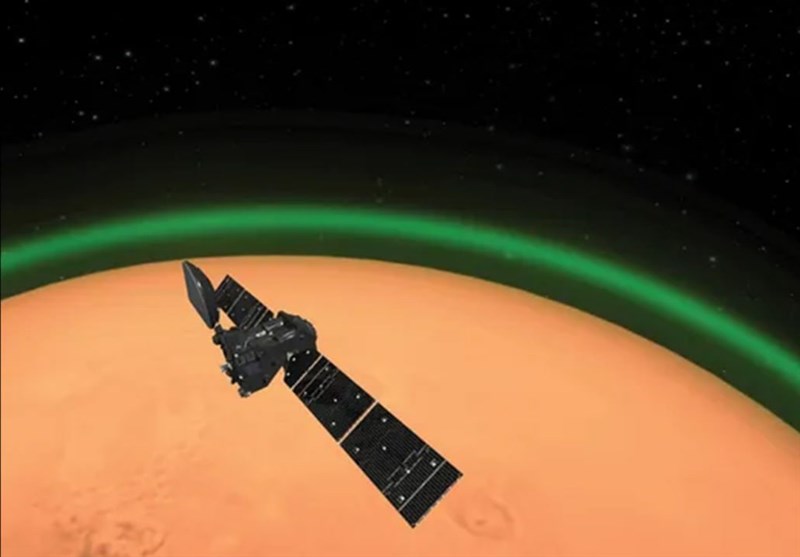Mars' Green-Glowing Atmosphere Observed for First Time
TEHRAN (Tasnim) – Using the European Space Agency's ExoMars Trace Gas Orbiter (TGO), scientists have witnessed Mars' atmosphere glowing green in the visible light spectrum for the first time, according to Livescience.
Known as airglow, this phenomenon, occurring on Mars, is akin to Earth's nightglow, generated by the combination of two oxygen atoms forming an oxygen molecule at an altitude of around 31 miles (50 km) on the Red Planet. Distinct from Earth's auroras caused by solar particles interacting with the magnetic field, Martian airglow presents a unique scientific opportunity.
Observations of Mars' nightglow date back a decade, initially identified in the infrared spectrum by ESA's Mars Express orbiter. However, it wasn't until 2020 that scientists spotted the phenomenon in visible light using TGO, this time during Martian daylight. The recent observation occurred at night, further expanding our understanding of this peculiar atmospheric behavior.
Jean-Claude Gérard, a planetologist at ULiège, emphasized the significance of these new observations for future missions to Mars. He stated, "The intensity of the night glow in the polar regions is such that simple and relatively inexpensive instruments in Martian orbit could map and monitor atmospheric flows." Gérard highlighted the potential for future ESA missions to include a global imaging camera to study this phenomenon. Additionally, the emissions could be visible during the polar night for astronauts in orbit or on the Martian surface.
Continuing studies of Mars' nightglow as part of the TGO mission will grant scientists insight into the Martian atmosphere's processes. Benoit Hubert from the University of Liège's Laboratory for Planetary and Atmospheric Physics noted, "Remote sensing of these emissions is an excellent tool for probing the composition and dynamics of Mars' upper atmosphere between 40 and 80 km (25 to 50 miles)." This inaccessible region holds crucial information, unattainable through direct satellite measurements.
Understanding Mars' atmosphere also holds practical implications for spacecraft design. Insights into atmospheric density aid in constructing resilient satellites and designing efficient parachutes for landing payloads on the Martian surface. Such revelations from studying Mars' atmosphere offer invaluable guidance for future missions to the Red Planet.






